What Is My Unique Value Proposition? How To Find It & Why It Matters
What is the most important thing that a new visitor needs to understand immediately when he visits your site ?
It’s simple…
What makes this better than the alternatives?
But before you strive to answer this question, there are 2 other important things that your visitor needs to understand even before…
Precisely, what does the site offer? and
Who is the offer for?
First you need to get this right:
Some time back, we conducted a test on 95 randomly selected websites (ecommerce, SaaS, SME, Niche sites selling infoproducts).
Result:
82% of the sites examined, i.e. 78 sites out of 95, did not provide an answer to one of these two questions.
In 54% of cases, i.e. 51 sites out of 95, the sites do not properly answer any of these 2 questions.
If 82% of sites fail to communicate clearly what their offer is or who it is aimed at, how is it possible that they communicate a unique Value Proposition?
And..
When I say “precisely”, that does not mean for example:
“Learn to negotiate”, or
“Succeed your online project”
These topics are far too broad and generic. They are intended for almost everyone, and therefore no one in reality.
The following 2 offers, on the other hand, will pass the test successfully:
“Learn the 7 critical Negotiation Techniques for Medical Device Salespeople”
“Create an e-commere shop and double sales each month for the first 6 months: Our program guides you step by step, even if you are an absolute beginner. And we can proof it.”
So… providing an answer to the 3 questions above is the most important step in making your visitor take action on your website. So… how to you procede to create your own unique Value Proposition? Follow me…
What Is My Unique Value Proposition?
What is a Value Proposition? A Simple Definition
- It’s Specific. Your Value Proposition provides a concrete benefit or solves a specific problem.
- It’s Unique. Your Value Proposition gives your target customer a clear reason to choose you, rather than a competitor.
- It’s Relevant. Your Value Proposition explains how your product or service can help your target customers. You have to present it from their perspective.
Just as important as what you propose, is how you communicate it. Distilling the core principle of your business into a single, concrete sentence is difficult – but it will skyrocket your PPC campaigns and save you thousands of hours wasted on low-quality leads.
What Isn’t a Value Proposition?
Because it’s difficult to create a UVP, people often try to use other kinds of messaging instead. These are some things that are frequently mistaken for a Value Proposition:
- It isn’t a boast – the point of your proposition is to explain what you can do for a customer. Simply saying how great your product or service is misses the point.
- It isn’t branding – you are highlighting concrete benefits, rather than establishing an identity.
- It isn’t a slogan – that means it doesn’t need to be catchy, memorable or clever. Focus on clarity, rather than creativity.
- It isn’t just a description – your Value Proposition does describe what you offer, but it focuses on how that resolves your customer’s problem.
- It isn’t bullshit – avoid hyperbole (“the world’s best”), be realistic (a new toothbrush will not make your customer a millionaire), stick to things you can prove with evidence.
Why should You first Focus On The Value Proposition?
That’s because it tells your visitors why they should bother taking action with you!
If I had to give a single tip for increasing e-commerce conversion rates or generating more leads, it would be to develop a strong value proposition and test it with A/B testing software.
Breaking Down 5 Outstanding Value Propositions
The broader and more familiar a brand becomes, the less specific its marketing tends to be (think about how brands like Nike, Apple or Facebook use abstract slogans in their advertising). However, some of the most successful brands have retained their original Value Propositions despite rapid growth. These five examples showcase some of the best copywriting from the past decade.
1. LeadPages
Leadpages helps small businesses connect with an audience, collect leads and close sales. Easily build websites, landing pages, pop-ups, alert bars, and beyond.
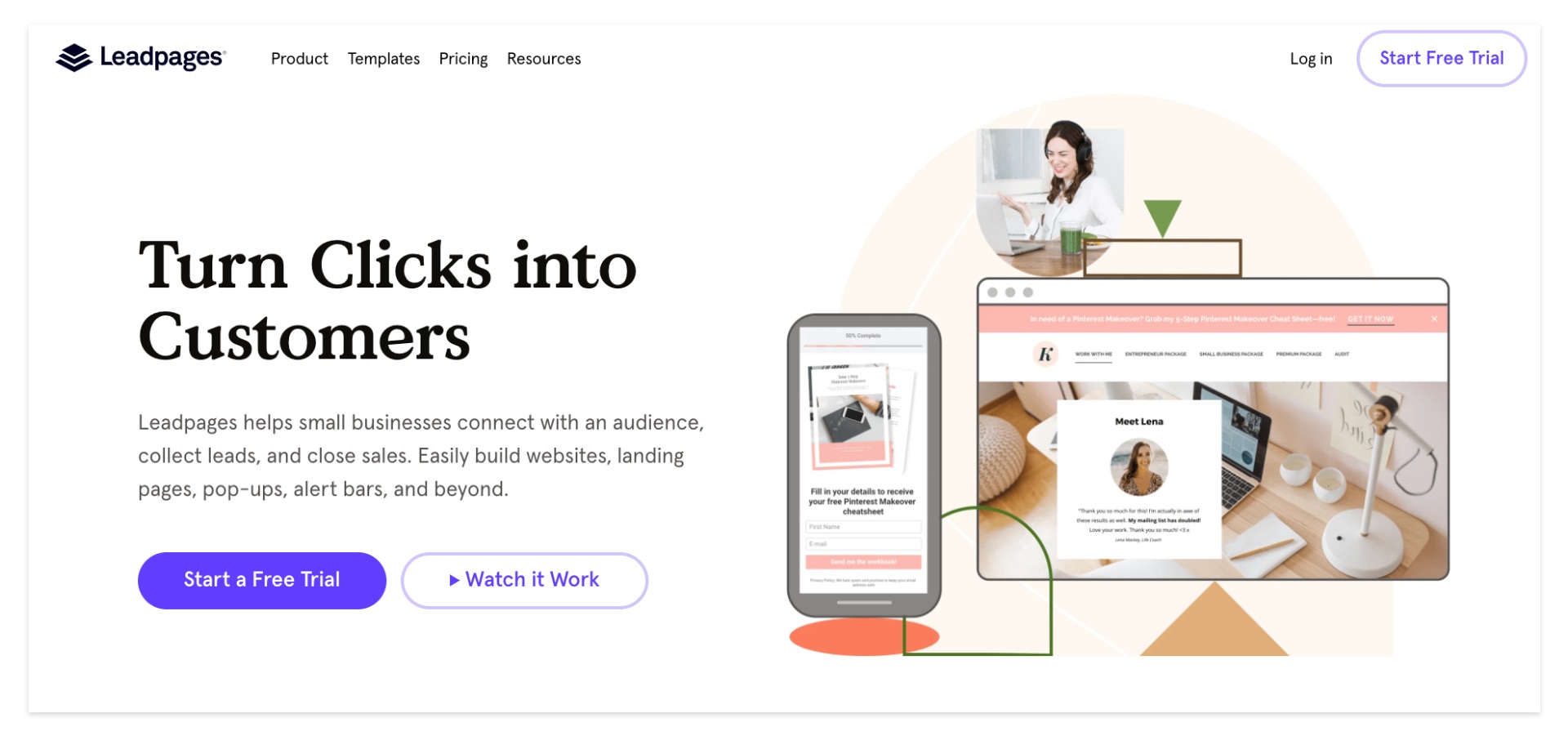
Leadpages is a landing page builder for small and medium-sized businesses. The succinct headline “Turn Clicks into Customers” allows for a more detailed subtitle with a list of applications (the headline is one of my favourites because its syllables 1, 1, 2, 3 form a Fibonacci sequence). Together, the titles sum up the Value Proposition perfectly.
What does it do? Helps users to collect leads and close sales.
Who is it for? Small businesses.
How does it work? Easily build websites, landing pages, pop-ups…
2. Grammarly
Compose bold, clear, mistake-free writing with Grammarly’s AI-powered writing assistant.
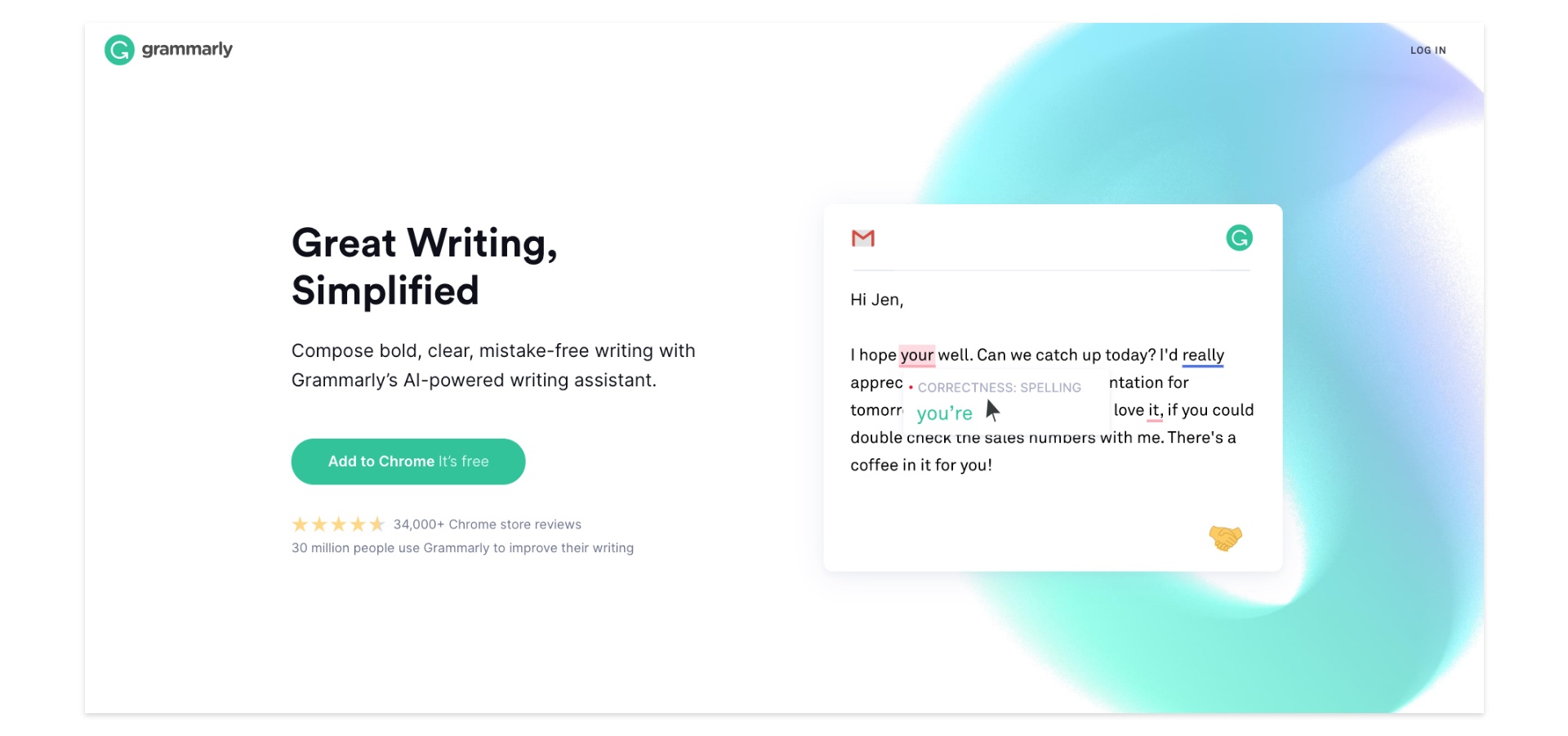
Grammarly is a writing assistant that combines spelling, grammar and composition tools. Because the software has broad applications and a wide audience, a direct Value Proposition is not possible. Instead, the homepage combines an illustrative gif with deceptively complex subtitle copy. The AI feature is used to differentiate Grammarly from other copywriting tools.
What does it do? Improves your writing.
Who is it for? People who don’t see themselves as writers (the clumsy phrase “mistake-free” serves as an audience dog-whistle).
How does it work? It is “powered” with AI.
3. Zapier
Connect your apps and automate workflows.
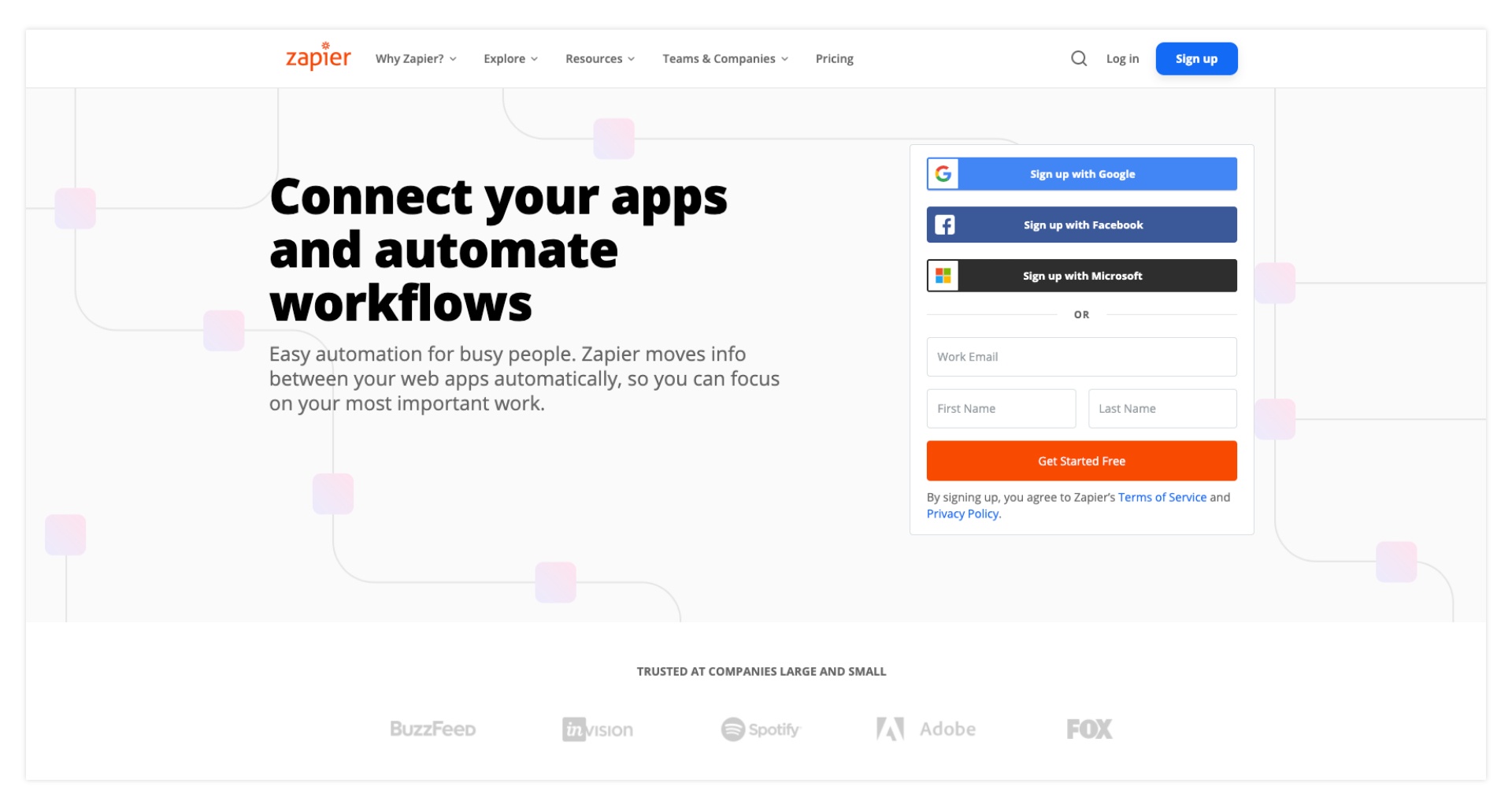
Zapier is an online service that shares information between apps using secure flows called “Zaps”. What makes this Value Proposition so impressive is that it digests a highly technical product into simple language. Without mentioning the target audience directly, the title and subtitle make it clear who Zapier is for.
What does it do? Connects your apps.
Who is it for? “Busy people” who need to focus on their “most important work”.
How does it work? Moves information between your web apps automatically.
4. Ecosia
The search engine that plants trees.
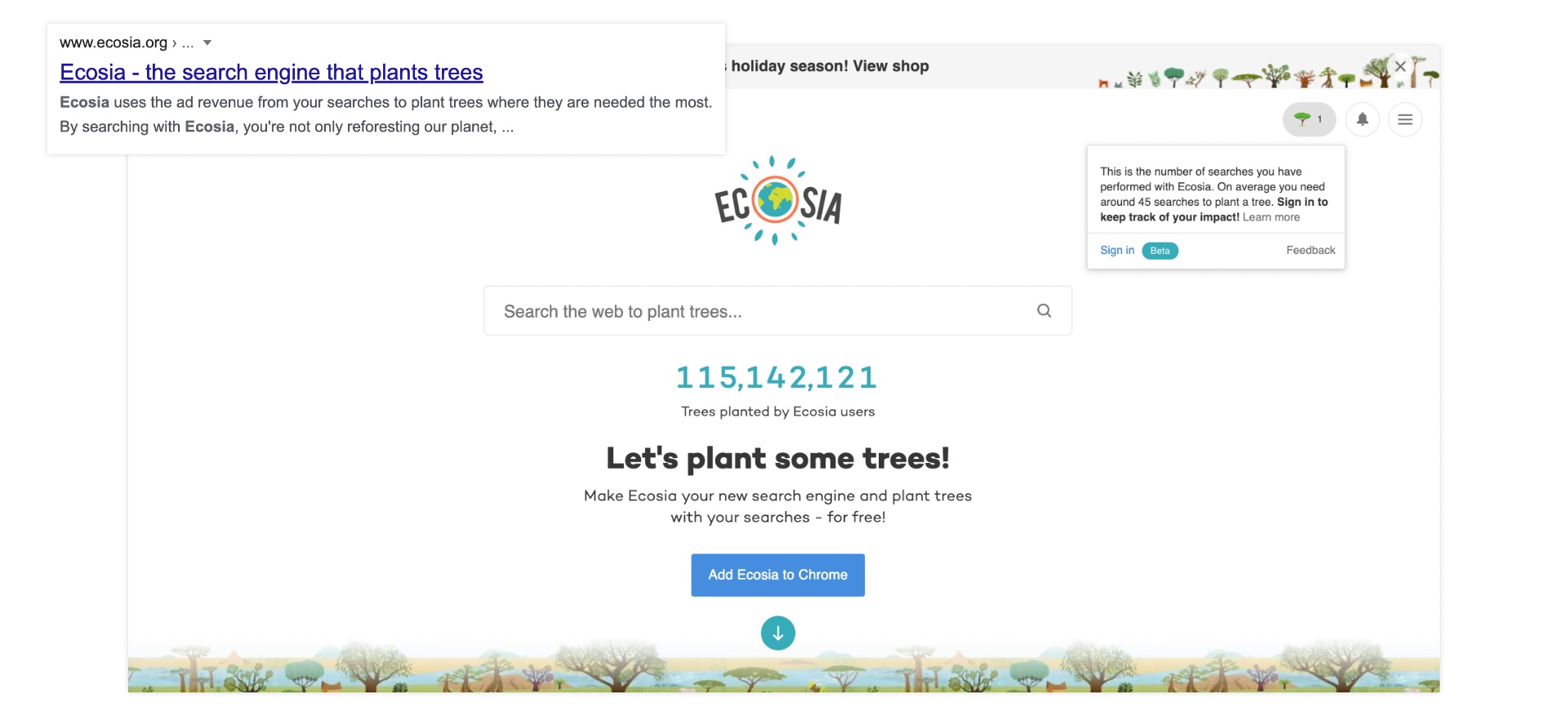
Ecosia is an alternative search engine that uses advertising revenue for environmental projects. Because the product is a search engine, there is no room to explain its Unique Value Proposition in a headline or subtitle. Instead, the search page displays a tree counter below the search bar and in the top corner.
The Value Proposition is communicated most clearly in Ecosia’s SERP meta description. The product’s complex and far-away benefits (using advertising revenue to fund ecological conservation) are summed up brilliantly with the simple image of planting trees.
5. Typeform
Create forms and surveys that people enjoy answering
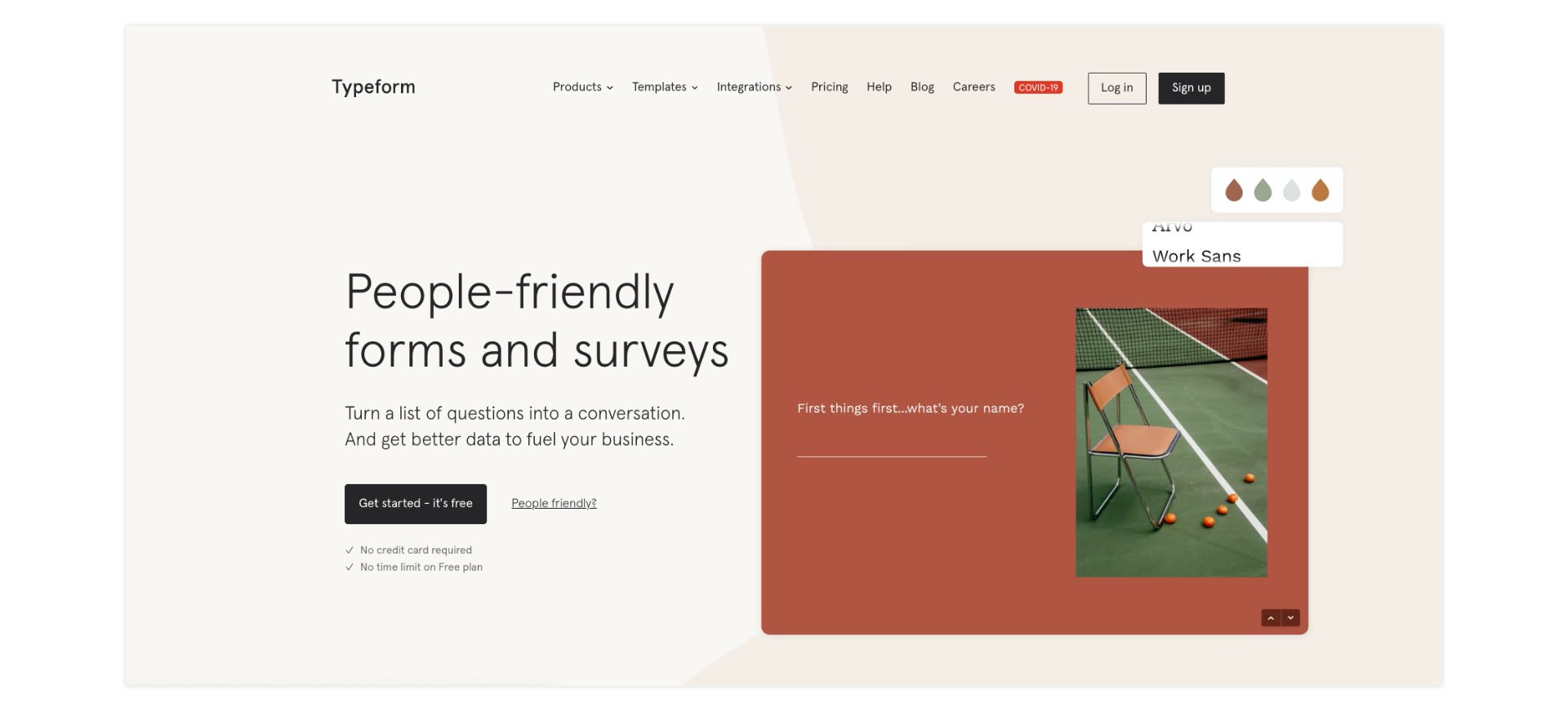
Typeform is a survey builder that creates beautiful forms and questionnaires. The reason that this unique Value Proposition stands out is that it turns something nebulous (the way your survey looks and feels) into a clear product benefit (you get more responses and better data). To reinforce the value of a “conversational” form, the copy is delivered in short staccato sentences that build on top of each other.
What does it do? Builds web forms and surveys that get more responses.
Who is it for? Business customers who need customer data.
How does it work? It makes your forms “people-friendly” and conversational.
What is My Unique Value Proposition?
How to find it?
How to find it?
For most marketers, this is probably the single most important improvement that they can bring to their website to increasse conversions and make more money. There a 3 key ingredients… and a 6 step process.
Step 1. Customer Research
A Value Proposition presents your offer from your target customers’ point of view. So, the first step is to make sure you understand your customers. It’s not just about demographics; the most valuable insight you can gain is what motivates your target customers.
- An easy way to get a snapshot of your customers is to access the Audience reports from your Google Analytics data.
- To find out what people are looking for when they arrive on your site, look for the most common search queries in your Search Console data.
- For the sorts of questions that people ask when considering a product or service like yours, use an SEO tool like Answer the Public.
- To really understand what makes people choose your product over your competitors, use mini-surveys (Hotjar or similar) and post-purchase surveys in your ecrm sequence.
Once you have a clear view of who your customers are, the questions they ask and which factors affect their choices, it will be much easier to create a customer-centric proposition.
Step 2. Benchmarking
Some companies have a completely unique product. However, for most, there are a number of competitors offering similar alternatives. Finding out what sets you apart from the competition can be complicated, because you are competing on several factors at once.
To make things easier, you should begin by benchmarking the competition. An easy way to find your most direct rivals is to type your company name and “vs” into the Google search bar. The autocomplete responses will give you the most frequent comparisons. Once you have a list of 5-6 direct alternatives, create a spreadsheet with your rivals along one axis and competitive factors along the other. You should also rank each alternative in order of pricing, features and how far they address the questions and concerns identified in step 1.
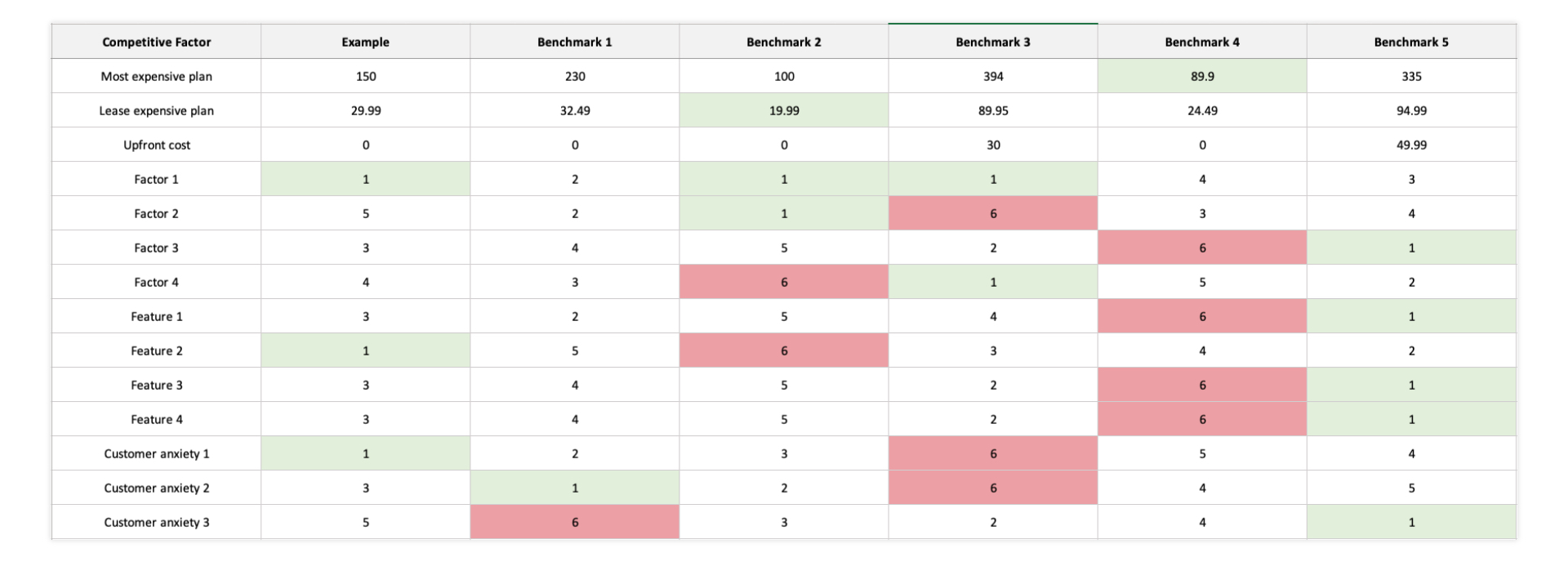
Using this table, you should be able to see where your product is positioned in relation to the alternatives. In the example above, the company performing the benchmarking should focus on Factor 1, Feature 2 and Customer Anxiety 1. If your offering includes a unique feature, or addresses a customer anxiety in a unique way, it makes sense to focus on that.
Step 3. Translate your features and advantages into tangible benefits
Once you have a clear image of your customers, and have found your competitive advantage, you need to turn it into something meaningful for your target audience. This is the most difficult step, because you have to make your advantage clear and concrete.
In the example above, the simplest formulation would be: “Example helps you solve Customer Anxiety 1 using Feature 2.” This is a common formula for a SaaS solution or an everyday tool. In fact, once you start comparing Value Propositions for different kinds of offering, you’ll notice that there are some common formulas for each one:
- We help … do … by … (for a service)
- The … way to … without … (for a tool)
- … is the (tool type) that … (for a tool)
- Get the only … that … (for a product)
Whilst these are tried and tested formulas, some of the most powerful Value Propositions are delivered in a completely different format. In any case, the phrase you use to communicate your Value Proposition is not as important as the principle itself – which will inform all of your subsequent content.
Remember, the aim is to be Relevant, Specific and Unique. If your Value Proposition is too abstract, use concrete examples or even metaphors to make it more cogent (Ecosia’s use of “planting trees” to stand for environmentalism is a good example).
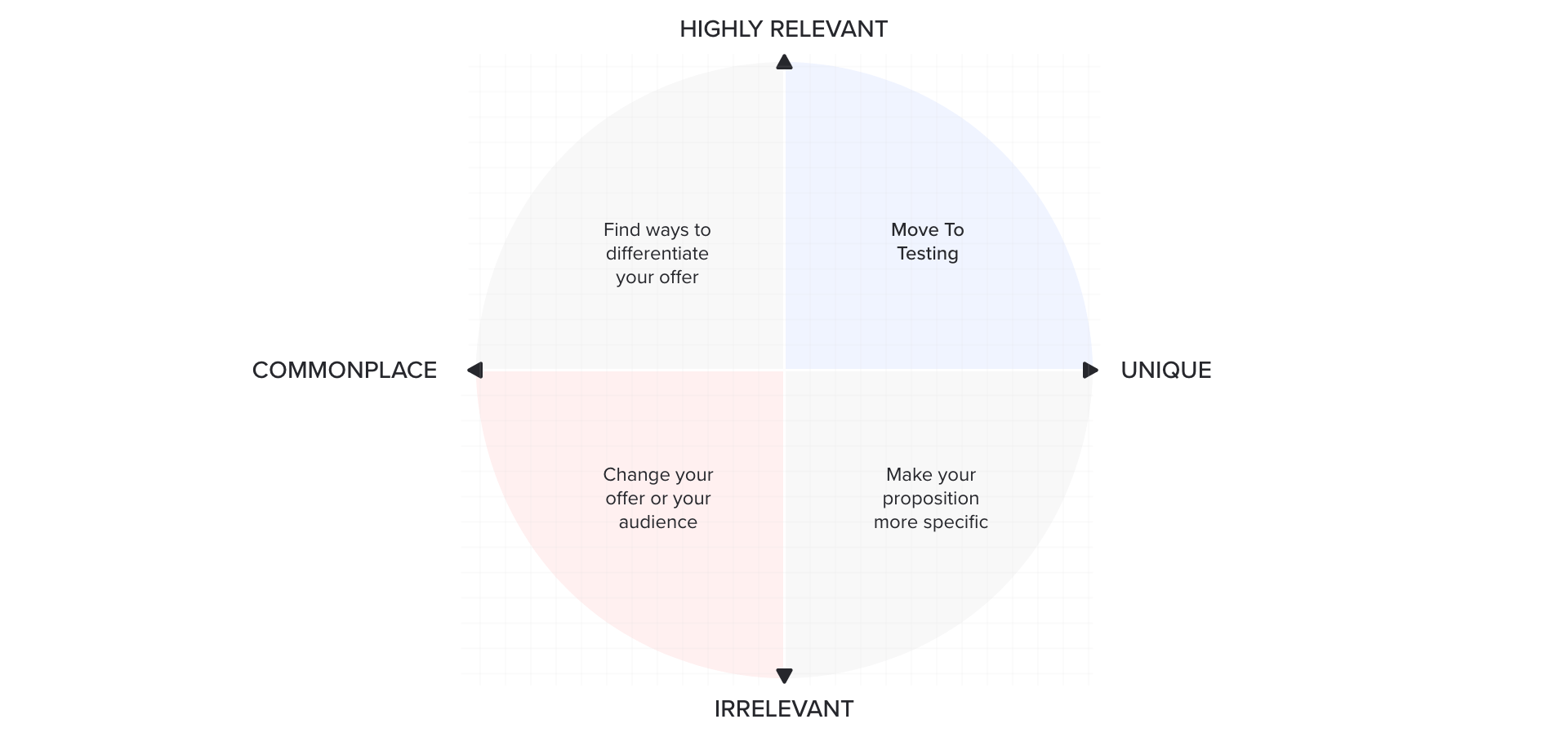
Step 4. Test your Value Proposition in real life
No matter how well you think you know your audience, it is essential to test your Value Proposition before you commit to it. We all have biases, and our assumptions are often wrong. So, you should try to base your content decisions on research, experiments and data.
Here are some examples of what happens when marketers don’t test their ideas in a real-world setting:
- Marks and Spencer (M&S) 2014: Marks and Spencer performed a website redesign between 2013 and 2014, investing in UX designers and the latest eCommerce trends but, crucially, they didn’t test their new designs on a real-world sample. By March of 2014, online sales had fallen by 8%.
- Walmart (2011): Following user surveys about the in-store experience, Walmart remodelled their store interiors, reducing the amount of on-shelf products and removing end-displays from their aisles. Despite users insisting that a cleaner store design improved their shopping experience, Walmart saw sales drop immediately (one report placed the drop as high as $1.85 billion).
How To Test Your Unique Value Proposition
Testing your Value Proposition might seem like a hassle, but there are a few ways to do it.
1. Compare PPC campaigns with different UVPs
It’s important to experiment with multiple ads when running a Facebook or Google campaign. One will usually outperform the other, allowing you to optimize your campaign and save money. You can use these competing ads to test different versions of your Value Proposition. This has the advantage of showing you what motivates different customer segments.
2. Or… do the easy part first by using my step by step guide…
How To Enhance Your Value Proposition With “Boosters”
A “Value Booster” is something you add to your main offer to make it more appealing. Free delivery, for example, can make your main proposition much more enticing. Effective Boosters give your visitors something extra that your competitors don’t offer, for example:
- Performance pricing – only pay for what you get
- Free trial for … weeks
- More than happy, or your money back (if you don’t love it, we’ll also throw in a voucher)
- Bonus gift worth … with any purchase
- Access to your account for multiple users
- Delivery within 24/48 hours
Always ask yourself: “How can I improve the customer experience without increasing the price.” Most online businesses can remove Friction from their customer journey by adjusting their sales process in a few simple ways. This added convenience can help to further differentiate your offer.
Your Own Unique Value Proposition
If you want more visitors to become customers, you need to give them a good reason to take action. Your Value Proposition explains why your target customer should choose your offer, rather than an alternative. It should be relevant to your audience, provide a specific benefit and present something unique.
As your business grows and your customer base expands, your Value Proposition is likely to become less explicit. However, rather than disappearing, it will turn into an implicit feature of your brand. The world’s most successful companies are built on a simple Value Proposition with the power to scale up.

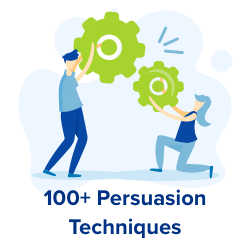


Very thorough and useful insight!
Thanks – I’m glad you found it useful! Creating a good unique Value Proposition is absolutely essential and yet seriously undervalued…
great piece – I have to explain value prop to a group of artists and was having that “I know what is but I can’t explain it” moment – very clear article to help our explanations!